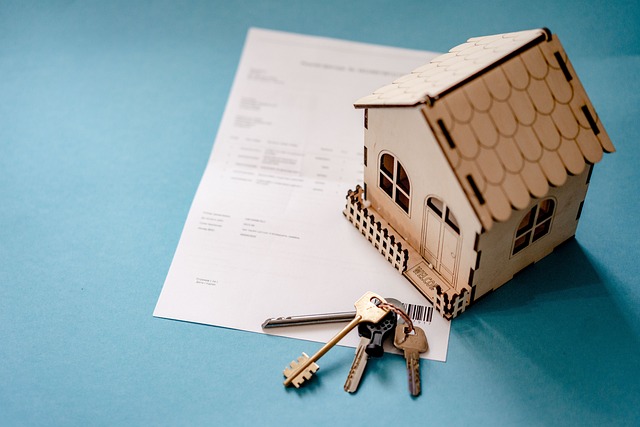Selling fire-damaged properties in California is a specialized market driven by both challenges and opportunities. Homeowners facing foreclosure or economic distress due to wildfires can benefit from specialized programs rehabilitating and reselling their damaged homes, while buyers can acquire properties at potentially discounted rates. Strict state and local regulations ensure safety, transparency, and fair practices, with thorough inspections, disclosure of known issues, and digital marketing strategies crucial for successful sales. A strategic approach involving inspection, repair estimation, documentation, professional staging, incentives, and flexible terms is key to maximizing returns in this unique California real estate segment.
In the wake of natural disasters, California faces a unique challenge: distressed property sales. This article delves into the complex landscape of fire-damaged real estate in the Golden State, exploring both the challenges and opportunities that arise from these situations. From understanding the legal framework to implementing effective marketing strategies, we provide insights for maximizing returns on fire-impacted properties. Key topics include California’s specific regulations around selling fire damaged property and proven tips for efficient sales.
- Understanding Distressed Property Sales: A California Perspective
- Fire-Damaged Properties: Unique Challenges and Opportunities
- The Legal Framework for Selling Fire-Impacted Real Estate
- Marketing Strategies for At-Risk Properties in California
- Maximizing Returns: Tips for Efficient Fire-Damaged Property Sales
Understanding Distressed Property Sales: A California Perspective

In California, distressed property sales have become an increasingly significant aspect of the real estate market, particularly for those dealing with fire-damaged homes. These transactions involve properties that are in foreclosure or faced with economic hardship, often due to unforeseen circumstances like a natural disaster, such as wildfires. Many homeowners in California find themselves navigating the complex process of selling their fire-damaged residences, which can be both emotionally challenging and logistically demanding.
The state’s robust real estate market provides opportunities for creative solutions, including specialized programs aimed at assisting distressed sellers. For instance, some initiatives focus on rehabilitating and reselling damaged properties, ensuring they meet safety standards while maximizing resale value. These efforts not only support homeowners in recovering financially but also contribute to the local community by revitalizing areas affected by disasters. Understanding these unique sales dynamics is crucial for both real estate professionals and prospective buyers navigating the California market.
Fire-Damaged Properties: Unique Challenges and Opportunities

Fire-damaged properties present a unique set of challenges and opportunities for real estate agents and buyers in California. When a home suffers extensive damage from a fire, it’s not just about fixing structural issues; it involves addressing potential health hazards, such as asbestos or mold, which can complicate the repair process and impact the property’s value. This level of damage often results in lower initial sale prices compared to similar non-distressed homes.
However, for buyers willing to take on these challenges, fire-damaged properties offer an opportunity to secure a property at a potentially discounted rate. Many buyers seek to renovate and rebuild, transforming the space into their dream home while contributing to California’s real estate market recovery. This process requires careful navigation through rebuilding regulations and insurance claims, but it can be highly rewarding for those up for the task.
The Legal Framework for Selling Fire-Impacted Real Estate

In California, the legal framework for selling fire-impacted real estate is governed by a combination of state and local laws, focusing on ensuring transparency, safety, and fair practices. After a fire, property owners must adhere to specific regulations before putting their damaged assets up for sale. These include obtaining necessary permits from local authorities, who will assess the extent of damage and mandate repairs or demolition if required. The process often involves thorough inspections to verify that the property meets safety standards and is fit for habitation or commercial use.
California’s real estate laws also dictate how fire-damaged properties should be disclosed to potential buyers. Sellers must provide comprehensive information about any known issues, including details about the fire, its cause, and the subsequent repairs. This transparency is crucial in mitigating liability for future owners and fostering trust within the real estate market. For instance, specific forms like the California Residential Purchase Agreement require disclosures related to property condition, which can be particularly pertinent for fire-impacted homes.
Marketing Strategies for At-Risk Properties in California

In California, where the real estate market is both dynamic and competitive, distressed properties present unique challenges for sellers. When a home has sustained fire damage, marketing becomes even more intricate as potential buyers often require extensive repairs before considering purchase. Therefore, an agile marketing strategy is essential to sell fire-damaged properties efficiently in this state.
Employing digital marketing techniques can significantly enhance visibility. High-quality photography showcasing the property’s pre-fire condition and emphasizing its potential post-renovation is key. Virtual tours and 3D renderings offer remote buyers a comprehensive view, facilitating their assessment of repairs needed. Additionally, leveraging targeted social media campaigns and online real estate platforms dedicated to distressed sales can attract interested investors or homeowners looking for renovation projects.
Maximizing Returns: Tips for Efficient Fire-Damaged Property Sales

When selling fire-damaged property in California, maximizing returns requires a strategic approach. The first step is to conduct a thorough inspection to assess the extent of damage and create an accurate repair estimate. This not only helps in setting a realistic asking price but also provides a baseline for negotiating with potential buyers. Additionally, documenting the repairs needed through photographs and detailed reports can be invaluable during the sales process, assuring prospective buyers that the property is being transparently presented.
Next, focus on staging the property to highlight its potential. Even fire-damaged homes can be made appealing by emphasizing their features and layout. Professional staging can transform a damaged space into a desirable residence. Furthermore, consider offering incentives or flexible terms to attract buyers, such as including repair costs in the sale or providing a warranty for peace of mind. Efficient sales tactics, combined with honest disclosures, can turn selling fire-damaged property in California into a successful and profitable venture.
Distressed property sales, particularly fire-damaged properties in California, present both challenges and opportunities. By understanding the legal framework, leveraging effective marketing strategies, and implementing efficient sales techniques, investors can navigate this unique market successfully. Selling fire-damaged property in California requires a thoughtful approach to maximize returns while meeting the needs of all stakeholders involved. With the right knowledge and strategies, these transactions can offer lucrative opportunities for those who dare to delve into this niche real estate segment.






